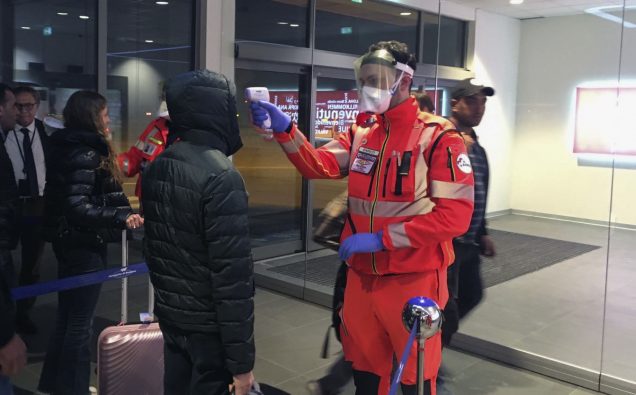
By Huma Nisar, Iftikhar Ali, Muhammad Luqman
The rapidly spreading coronavirus infections in the United States and Europe are making the task to contain the COVID -19 harder. Policymakers look for ways to confront the outbreak while governments scramble to ensure medical supplies, and provide economic relief to people.
The latest figures also show that it’s not just the elderly but young people, aged below 50, who make a significant number of the overall infections.
Underscoring the peril is the latest World Health Organization data that reveals that it took three months for coronavirus infections to reach the first 100,000 but it took the virus just 12 days to double and hit the grim milestone of 200,000.
The figures come as the COVID-19 dealh toll around the world has crossed 10,000, including more than 200 in the United States.
The Trump Administration and Congress are working out a $1 trillion deal to cope with the economic fallout of the pandemic sweeping continents.
New York and California have asked citizens to stay home as they grapple with the outbreak, testing healthcare systems like never before. According to The Washington Post one quarter of all Americans have been told to stay indoors, preferably at homes.

Total confirmed deaths due to COVID-19 per million people, 20 March 2020[2 IMAGE: Our World in Data/Wikimedia
DARK TIMES FOR EUROPE
Italy has become the epicenter of coronavirus infections as it reported more than 600 deaths from the disease. The country has lost more than 4,032 people to COVID-19 disease and has suffered more than 47,021 cases of infections.
The entire population is in a state of lockdown.
Spain, Britain, the Netherlands are also seeing a rise in the number of cases.
German Chancellor Angela Merkel has declared coronavirus the biggest challenge for her country since WWII.
YOUNG PEOPLE ARE NOT INVINCIBLE
WHO Director-General Tedros Adhanom says so far older people are hardest hit, yet younger people are not spared and those under 50 make up a significant proportion of patients requiring hospitalization.
“Today, I have a message for young people: You are not invincible”, the WHO chief stressed.
“This virus could put you in hospital for weeks, or even kill you. Even if you don’t get sick, the choices you make about where you go could be the difference between life and death for someone else”.
Officials are particularly concerned that COVID-19 oubreak in countries with weaker health systems could result in significant escalation in numbers of sickness and loss of life.
THE PRACTICAL CHALLENGE
The challenge on the ground seems to be persuading the people to take preventive measures and stay home, practice social distancing and resist community gatherings to stave off community-wide spread.
Iran is an example, which is another epicenter of COVID-19. Initial negligence led to rocketing of the cases that spread to neighboring countries through pilgrims going back to Afghanistan and Pakistan.
The other challenge is for governments to ensure supplies of foods, preventive and medical tools to deal with the pandemic.
The IMF and the World Bank have committed resources to tackle the pandemic but the real test for the political leaders to stem the stock market rot and halt job losses.
Perhaps the biggest practical challenge is for the developing countries in South Asia and Africa to ready themselves to take on the outbreak. Both finances and absence of adequate health facilities pose a massive risk.
THE WAY OUT IS VERY MUCH POSSIBLE AND SIGNS ARE HOPEFUL
A massive rise in deadly infections “is not inevitable”, Ghebreyesus, WHO head, says.
“Unlike any pandemic in history, we have the power to change the way this goes”.
Wuhan, the Chinese city, where the coronavirus originated, this week reported no new cases for the first time since the outbreak started.
That “provides hope for the rest of the world, that even the most severe situation can be turned around,” WHO chief says.
Another cause of hope is the medical advances that the world has made since 1918, when the Spanish influence destroyed millions of lives.
Yet another difference this time is that nations are generally much richer and preventive guidelines are easily accessible through media including social media platforms.
Another ray of hope is the fact that in the majority of cases patients have recovered. According to Johns Hopkins, by Mar. 20, 2020, 10,067 deaths have been attributed to COVID-19. and 86,037 people have recovered from the illness.
This report has been compiled on inputs from Views and News contributors and a variety of news sources including the World Health Organization and Johns Hopkins University


















